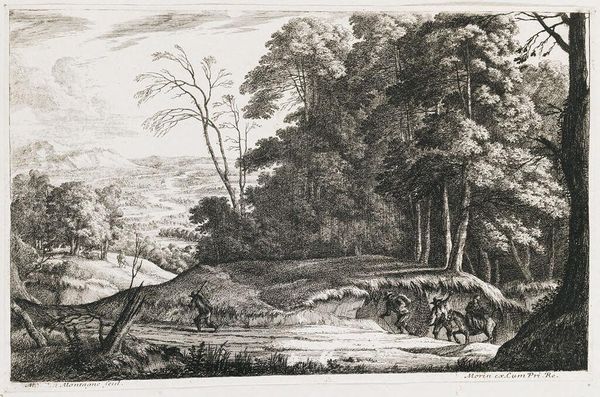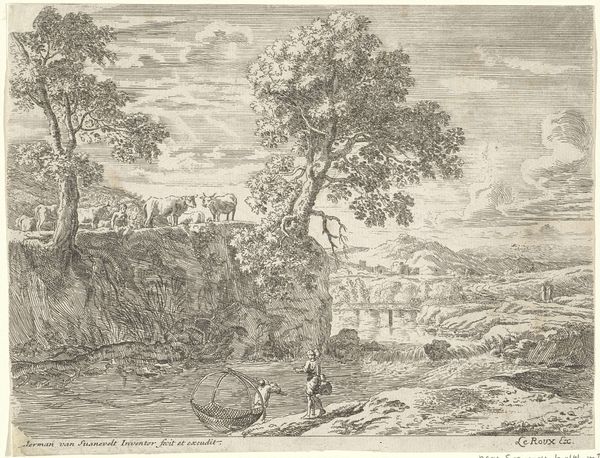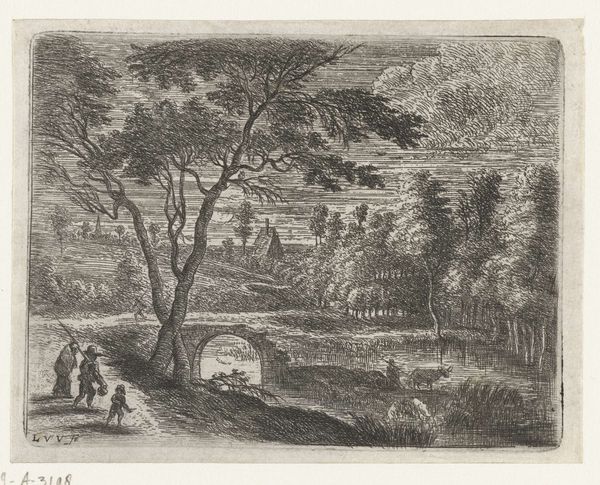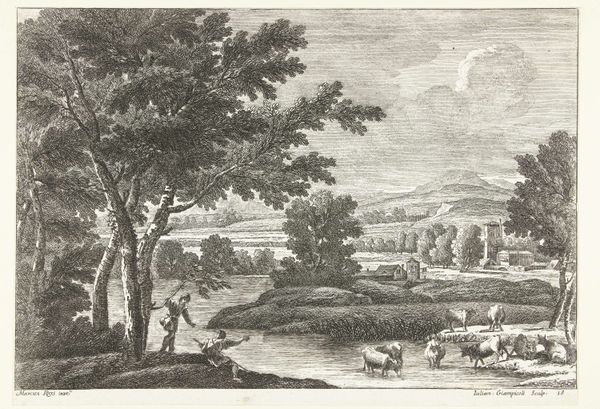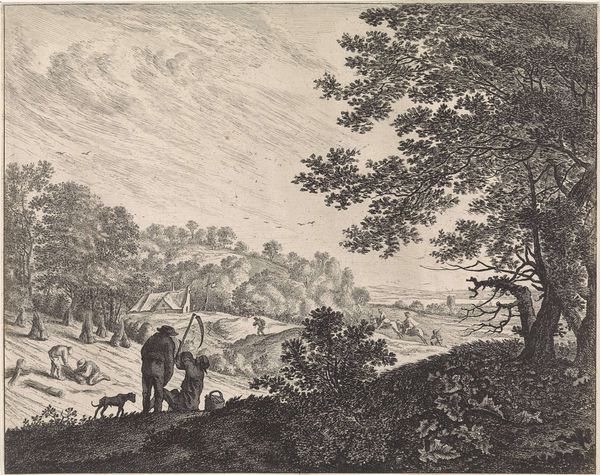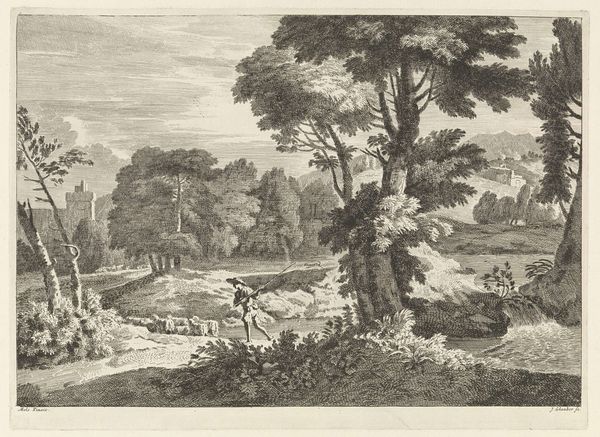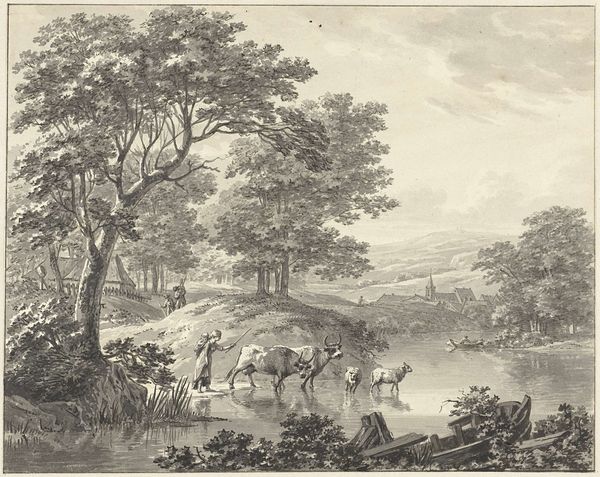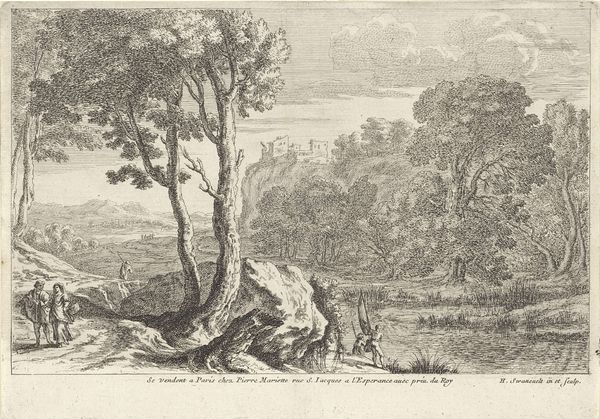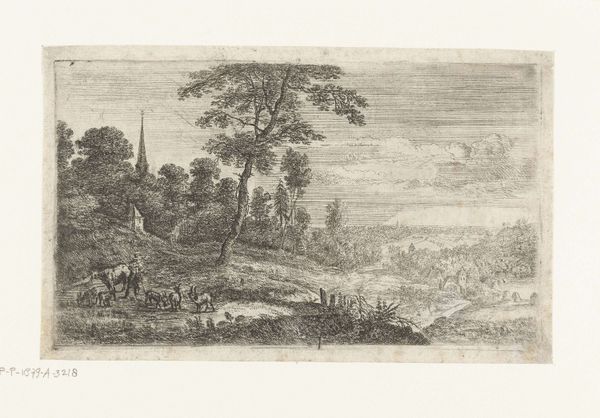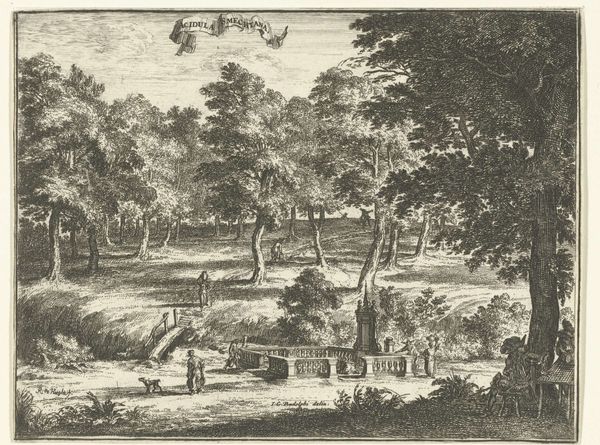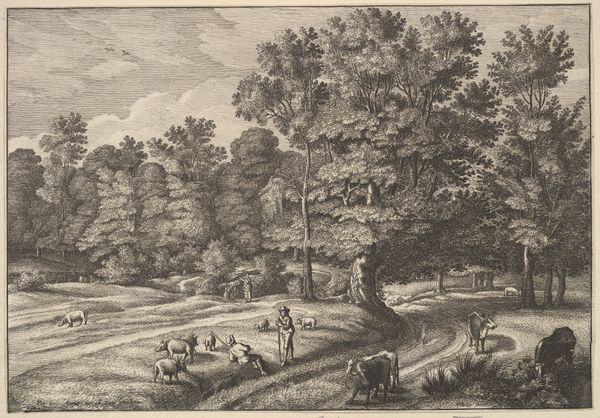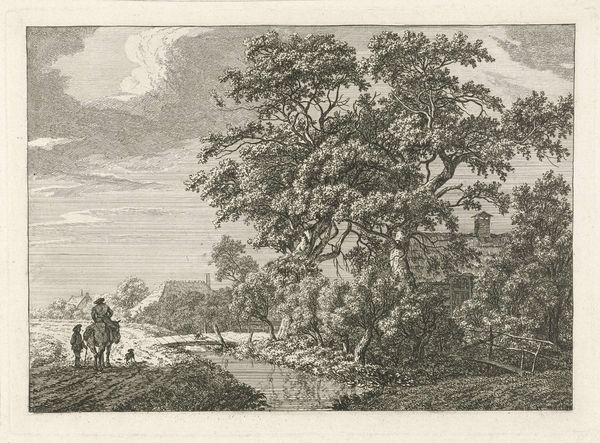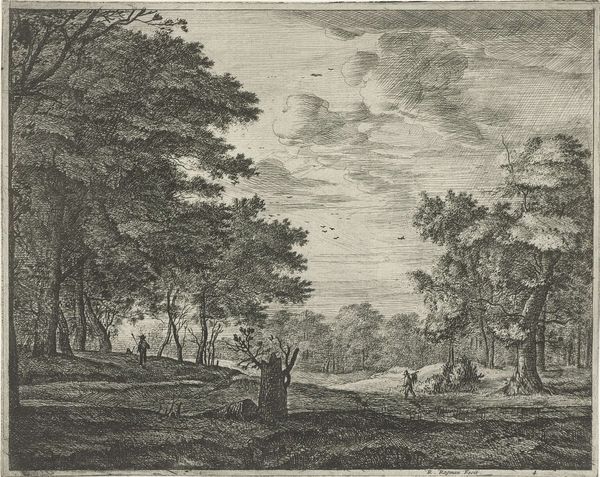
etching
#
baroque
#
etching
#
landscape
#
realism
Dimensions: height 177 mm, width 270 mm
Copyright: Rijks Museum: Open Domain
Curator: Welcome. Before us is "De weg langs de rand van het bos", or "The Road Along the Edge of the Forest", an etching by Matthieu van Plattenberg, dating sometime between 1617 and 1660. Editor: Immediately striking. A monochrome study in textures. The sheer density of marks creates a convincing sense of depth, pulling the eye from the foreground towards a distant, almost dreamlike horizon. The weight of the forest hangs heavy, doesn't it? Curator: It does. This piece offers a glimpse into the period’s fraught relationship with nature, where landscape served as both a serene backdrop and a potential site for asserting power, for land ownership, and, certainly for hunting and control. Who exactly are these travelers we see crossing this edge space? Editor: Look closely at how Plattenberg articulates light here. See how the etched lines vary in density and direction, almost mimicking the randomness of sunlight filtering through leaves? It’s all about the surface. How those myriad tiny strokes collectively evoke form and atmosphere. Semiotics teaches us how symbols gain new depth depending on presentation. Curator: It's fascinating how those minute details coalesce into an overarching statement about nature and those traversing it. Considering its time, this artwork likely functioned within a context of colonialism. These figures aren’t simply 'travelers'; they’re agents potentially complicit in exploiting the land and its resources. Editor: An exploitation visualized here through exquisite contrasts, let's not forget. The graphic play, between areas teeming with hatching and patches left relatively untouched, defines the very dynamic of this landscape. We're compelled to ask, isn't this inherent tension itself a form of expression? Curator: Indeed. Art holds its visual prowess and communicative strength and its ability to embody social, cultural, and political tensions. Through close analysis like this, we understand artwork as an artifact inseparable from their context. Editor: And as an exquisite dance of light, line, and texture... Curator: Precisely. This image presents the period and the politics with layered texture, almost as complicated as what the piece itself embodies. Editor: A place for aesthetics and history alike to reflect and mingle.
Comments
No comments
Be the first to comment and join the conversation on the ultimate creative platform.
